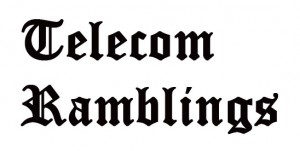By Rob Powell. Published on TelecomRamblings.com on November 25th, 2015
“Last week I had the pleasure of attending the MEF’s GEN15 conference in Dallas, Texas as a media sponsor. Software-defined Networking, Network Functions Virtualization, and Lifecycle Service Orchestration were the big buzzphrases just as they were last year. But there was a distinct difference in the air.
The vendors were there, talking up their wares as usual. The MEF was of course everywhere, talking up its ongoing Third Network LSO standards efforts. But this year, it was increased engagement of the network operators that I really noticed. The US contingent was led by AT&T, who seemed to be everywhere, with Verizon, Cox, Comcast, Time Warner Cable, Windstream, Level 3, and CenturyLink also there in force. International operators like Colt, PCCW, TI Sparkle, and Telstra were as well.
And more to the point, they were pretty much all there to talk about what they are actually doing with all the new technologies at their disposal, and how their industry would be reshaped by them. Last year, the tone was set by the vendors, who were making the case for those technologies — apparently they succeeded. Most of the time, the technology actually being used was still on a limited scale, but with little doubt of future expansion and transformation. At GEN15, the story was about current implementations, the need for more extensive implementations, and the even bigger need to adjust internally to really take advantage of the potential of those implementations.
There were a variety of interesting Proof of Concept demonstrations, with a growing emphasis on relevant real-world implementations.
Two network operators showed off new capabilities solo, as AT&T demonstrated its new network-on-demand platform, and PCCW did similarly.
And there were of course many team efforts.
Colt, which seemed to have a bit of a headstart at last year’s event, continued their collaboration with the Ciena (formerly Cyan) Blue Planet team with LSO-powered, vCPE-hosted NFV across both data center and WAN.
Another interesting demo was by Cox Business and Accedian, who showed the automated provisioning and operation of strand-mounted small cells. I suspect we’ll be hearing more about that sort of thing in 2016.
Wedge Networks teamed up with Houston fiber operator Phonoscope Lightwave to demonstrate Security as a Service using VNFs, SDN, and service Chaining. CenturyLink, Sandvine, and RAD teamed up for application-aware network policy control.
WebNMS teamed with Omnitron and Veryx to show an LSO-orchestrated on-demand service via CE 2.10 and an SDN-powered data center network.
CENX, which has seen rapid revenue growth this year helping the wireless carriers manage their backhaul networks, took aim at service quality for the Internet of Things via LSO and NFV.
MRV demonstrated distributed NFV via cloud-based multi-factor authentication.
Another interesting impression I had of GEN15 was how little I heard the word ‘Ethernet’ in comparison to things like SDN, NFV, LSO, and the like. Oh it was there, complete with Bob Metcalfe and some pretty good keynote jokes, but Ethernet was more present as the background of the painting than of the subject being painted.
I also got a look at GEN15’s LSO Hackathon, which despite the name had little to do with cracking anyone’s security. Rather, it was simply a room full of software guys from companies around the sector test-driving and improvising on each other’s latest APIs. I suspect a few of next year’s Proofs of Concept will have been born in that room.”
For the full article, please visit TelecomRamblings.com.



